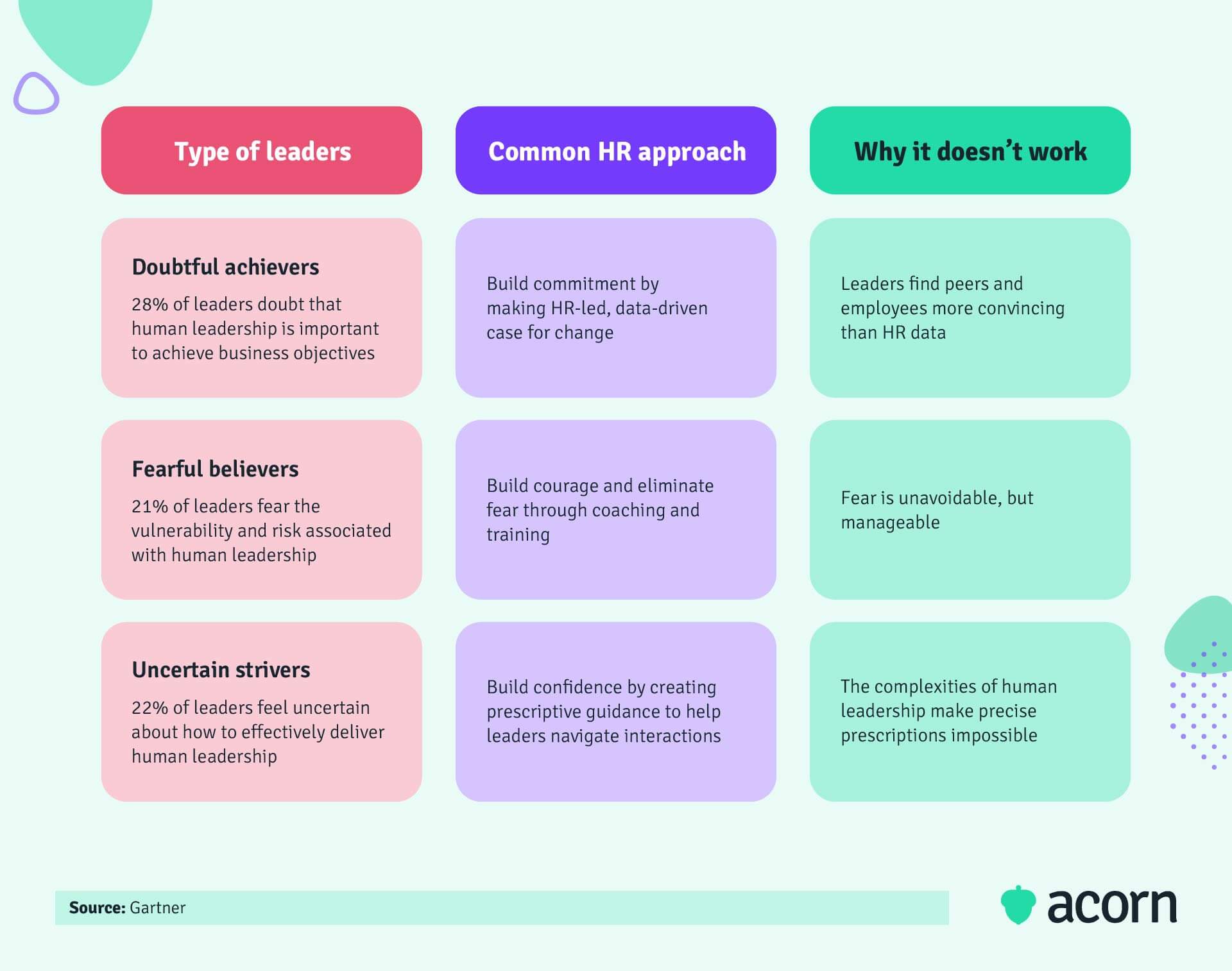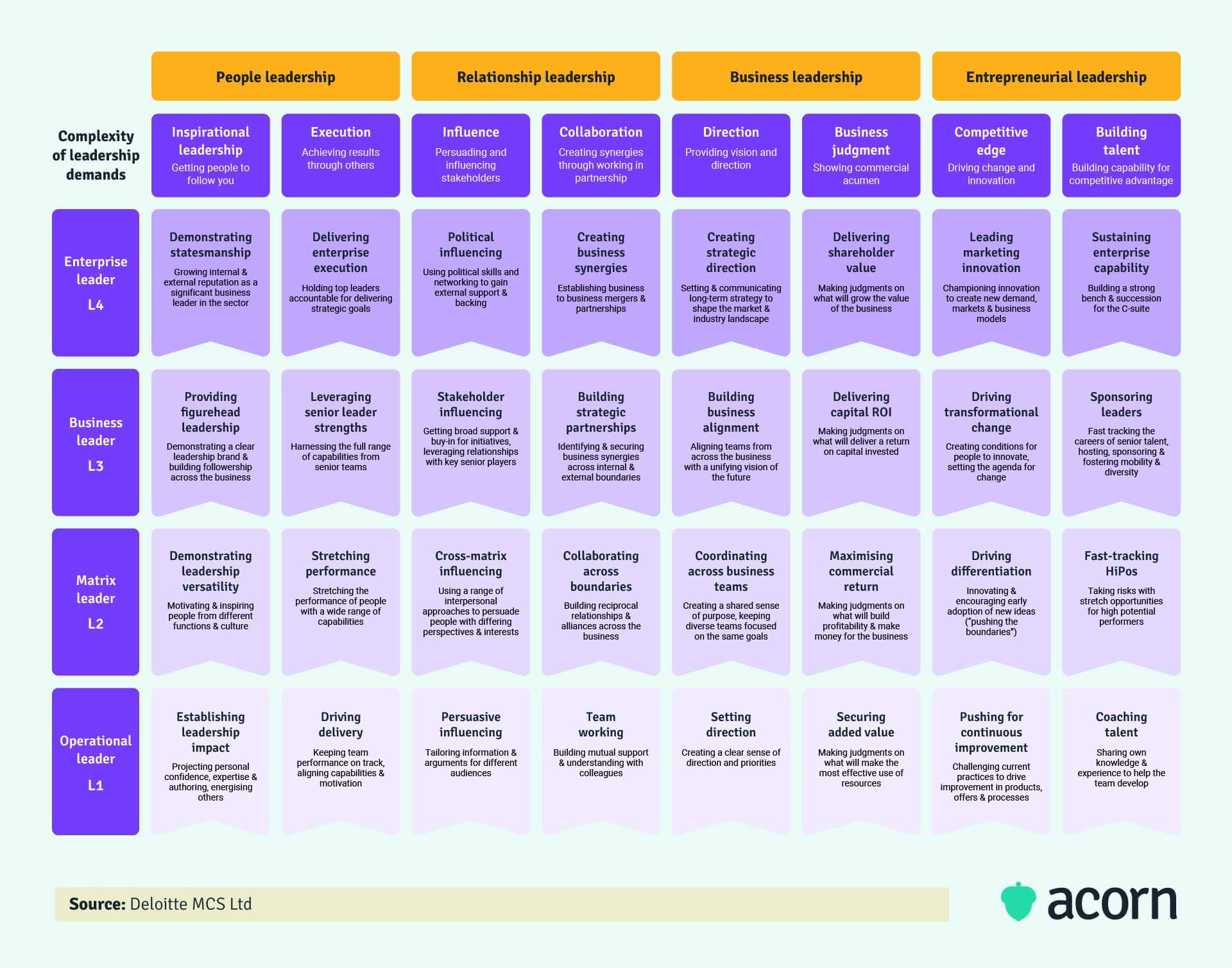The Importance of Setting Leadership Development Goals
Reading Time:

Lead the pack with the latest in strategic L&D every month— straight to your inbox.
SubscribeLeadership development goals can play a major role in driving engagement and efficiency within your team.
Any leadership program worth its salt will include leadership development goals to keep learners accountable to their training.
And any leadership development goals worth their salt will be designed to meet both organisational needs and individual capability gaps, ensuring leaders develop in a way that tracks for business and personal growth.
How to write leadership development goals for your needs (hint: think SMART) and a few examples to build from are laid out for you in this article.
What is leadership development?
Leadership development is the process of delivering learning activities to prepare current, emerging and future leaders to optimally perform in a leadership role.
Leadership development initiatives seek to improve:
- Decision making
- Project management
- Strategic thinking
- Network building
- People management
- Coaching.
Why is leadership development important?
Gartner believes a future of hybrid work creates a need for a more connected approach to leadership. However, the same conditions can give rise to three types of poor leadership without intervention.
Worse still, there are flaws in reactive training measures to poor leadership.

You can’t out-hire a lack of leadership presence, either; SHRM research found 35% of HR professionals cite leadership and learning agility as lacking skills among applicants.
The same research showed that leadership development is very important to the majority of CEOs’s strategic agendas, and yet McKinsey revealed only 7% of CEOs believe their organisations are developing effective leaders. For most CEOs, failure occurs because traditional professional development is not geared to prepare leaders for both present and future challenges.
And simply put, that costs you.
- Poor operational decisions cost organisations upward of 3% of profits
- 67% of business strategies fail because of lacking competitive context in leaders
- Ineffective leadership reduces company equity by 19% in the eyes of analysts.
The counteraction is developing leadership presence with the critical capabilities your organisation needs in future. This is a large element of Acorn performance learning management system (PLMS), the only solution that guides leaders to master the specific capabilities needed to excel in their roles. All learning is mapped to capabilities, so both employees and organisations can track progress towards learning goals and outcomes.
Leadership development should be about personal development as much as professional growth, in order to shape leaders who drive results through connection and collaboration. You just need to give your employees a reason to engage with this approach.
What are leadership development goals?
Leadership development goals are the outcomes employees are expected to achieve at the end of a leadership development pathway. Goals are generally derived from the leadership skills an employee needs to develop to close skills gaps.
How to write leadership development goals
Creating goals for a leadership development plan isn’t as simple as saying “develop active listening skills” or “improve time management”—just as L&D’s goal for leadership development shouldn’t be “build a great leader”.
Leadership development goals should start with an environmental assessment.
Identify organisational needs
As with all good training, goals should be tied to a leadership skills map or capability framework. This has two advantages.
- It ensures the capabilities developed are proven to have business impact.
- Employees are bridging tangible skills gaps, which ensures performance change.
Heatmapping will tell you what capabilities are critically needed. If it feels strange to foster leadership qualities focused on relationships and people, remember that a bad culture only hinders your productivity.
You’ll find that all good leadership capability frameworks will emphasise soft skills over technical. Deloitte defines theirs from leadership challenges—think creating synergy through collaboration, influencing stakeholders and building capability for competitive advantage.

Determine skills gaps
When you know your organisation’s needs, you can conduct a leadership assessment for individuals.
There are a few ports of call here.
- Self-reflections
- Performance evaluations
- Capability plans.
Managers can provide an objective understanding of an employee’s current strengths and weaknesses in line with the business’s capability needs. They’ll also have insight into the employee’s rate of progression, which will make putting deadlines on leadership goals easier.
If your organisation utilises learning technology, training history is a concrete way for individuals to understand their own comprehension (through progression rates) and proficiency. Reflecting on what has been hard to adopt from training and on the job will show areas for improvement, or areas of interest that may end up being strong leadership skills down the line.
Remember that strengths can become learning opportunities as much as weaknesses. Particularly for emerging leaders, there shouldn’t be a ceiling on successful performance. Strong influence within their team could be built on for influence with other business leaders, as an example.
Create an action plan for each goal
Here is where you add tangibility to goals. The best approach is smart—SMART, that is.
- Specific: Clear and precise
- Measurable: Tracked against benchmarks
- Attainable: Within scope for individual & company
- Relevant: Will help organisation succeed
- Time-based: Accomplished in a certain time frame.
Say the goal is to develop an employee’s ability to collaborate across boundaries. Making that actionable would look like:
- Turn the goal into a specific outcome, e.g. Increase cross-team collaboration by 20%.
- Determine how it will be achieved. Schedule bi-weekly meetings between reciprocal teams (e.g. support and product).
- Make it measurable; a 75% team participation rate accounts for changing workloads, illness and holidays.
- Put a deadline on it, such as by the end of the quarter.
Continually review and improve
As with any strategically impactful training program, you need to be consistently tracking progress and sentiment to understand efficacy.
You don’t need to reinvent the wheel here. Utilise the same systems you do in regular L&D activities to track leadership development goals. Remember that this step is made easier when you’ve created goals from ideal performance indicators.
Capability development plans within a learning management system give L&D oversight of progress and completions for individuals, as well as engagement rates to understand useful content—important if you’re buying third party content, as a reminder.
On the other hand, don’t forget more informal development practices. Mentoring is also another helpful avenue through which to track progress. It’s exceedingly helpful for effecting behavioural change and seeing on-the-job impacts. Deadlines for goals should be co-owned by mentors or managers to ensure true accountability.
Examples of SMART leadership development goals
In aiming to create more human and strategic leaders, goals aren’t as high level as emotional intelligence or business judgment.
Seek to develop broader business perspective and growth mindsets through leadership development goals. And while they’ll ultimately be unique to you, many high-impact organisations share a common set of leadership skills like:
- Actively listen
- Build capability
- Think big picture
- Be compassionate
- Challenge oneself.
Use active listening
Include a 10-minute open forum session at the end of every team meeting. Ask open-ended questions and stay entirely focused on each person talking. Act on a suggestion from each team member by the end of the quarter.
Why it should be a SMART goal
Perhaps the most important of communication skills, active listening means entering every conversation with the intent to hear out all discussions—avoiding the potential for echo chambers or stifled innovation.
It also ensures that employees feel valued, considering active listening encompasses body language, facial expressions and reactions. Focusing one’s entire energy on another person requires self-discipline but can help leaders notice performance slumps or behavioural change faster.
Build internal capability
Schedule fortnightly one-on-ones with team members to discuss priorities, challenges, workloads and even personal interests. Create individual development plans based on individual goals and run them for a four-month period.
Why it should be a SMART goal
Regular catch ups between leader and direct reports will improve employee engagement and remove the anxiety around building rapport. It’ll also strengthen a leader’s understanding of changing business needs, plus continuous development will reduce the need for leaders to micromanage.
Team leaders have a personal responsibility to develop talent in order to sustain organisational capability. People managers are also best placed to identify future leaders, though it requires training to become a good mentor and talent scout.
Improve business impact
Within a month, create a centralised knowledge base for frequently needed information to increase productivity and reduce the burden of micromanaging technical tasks.
Why it should be a SMART goal
Removing barriers to productivity for employees makes way for efficiency. While this may seem like a short-term goal, it’s but one example of how effective use of resources secures value add. Consistently looking for value add only serves to strengthen a leader’s business judgment.
Model empathy
Have one hour of open office hours every week for the next quarter. Use it as a safe space for employees to share what’s on their mind with their team leader, improving interpersonal skills in the process.
Why it should be a SMART goal
Compassion can be learned, which is handy since it’s important to recognise backgrounds, lifestyles and expertise all affect how a team member will approach their work each day. Working with compassion for others role models a culture of inclusivity for other employees, creating a more attractive environment with which to attract and retain talent.
Seek opportunities
Undertake one microlearning course a month on a topic of interest and/or attend one leadership workshop externally each year.
Why it should be a SMART goal
A good leader should always be challenging themselves to learn beyond their current expertise. A growth mindset is the belief that one’s professional and personal growth isn’t limited—which ultimately means a person works smarter because they worry less about appearing stupid and put more energy into learning what they don’t know.
Key takeaways
Your leaders will develop their own leadership style, but you should still seek to help them do so using the capabilities critical to business success.
Creating goals for leadership development clarifies how leaders fit into the business environment, what ideal performance looks like in the leadership ranks, and helps them become more effective and human leaders for the workforce.